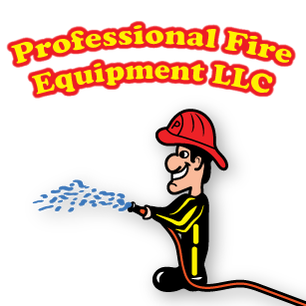In the following video, John explains the different types of fire extinguishers and how to properly use a fire extinguisher in case of emergency.
CLASS A: Class A fires involve common combustibles such as wood, paper, cloth, rubber, trash and plastics. They are common in typical commercial and home settings, but can occur anywhere these types of materials are found.
CLASS B: Class B fires involve flammable liquids, gases, solvents, oil, gasoline, paint, lacquers, tars and other synthetic or oil-based products. Class B fires often spread rapidly, and, unless properly secured, can reflash after the flames are extinguished.
CLASS C: Class C fires involve energized electrical equipment, such as wiring, controls, motors, data processing panels or appliances. They can be caused by a spark, power surge or short circuit and typically occur in locations that are difficult to reach and see.
CLASS D: Class D fires involve combustible metals such as magnesium and sodium. Combustible metal fires are unique industrial hazards which require special dry powder agents.
CLASS K: Class K fires involve combustible cooking media such as oils and grease commonly found in commercial kitchens. The new cooking media formulations used for commercial food preparation require a special wet chemical extinguishing agent that is specifically suited for extinguishing and suppressing these extremely hot fires that have the ability to reflash.
CLASS B: Class B fires involve flammable liquids, gases, solvents, oil, gasoline, paint, lacquers, tars and other synthetic or oil-based products. Class B fires often spread rapidly, and, unless properly secured, can reflash after the flames are extinguished.
CLASS C: Class C fires involve energized electrical equipment, such as wiring, controls, motors, data processing panels or appliances. They can be caused by a spark, power surge or short circuit and typically occur in locations that are difficult to reach and see.
CLASS D: Class D fires involve combustible metals such as magnesium and sodium. Combustible metal fires are unique industrial hazards which require special dry powder agents.
CLASS K: Class K fires involve combustible cooking media such as oils and grease commonly found in commercial kitchens. The new cooking media formulations used for commercial food preparation require a special wet chemical extinguishing agent that is specifically suited for extinguishing and suppressing these extremely hot fires that have the ability to reflash.
How To Use a Fire Extinguisher
First of all, keep your extinguishers where you can see and reach them easily; like near the room's exit. Not only does this make them more accessible in case of an emergency but it also keeps you near an exit if you need to escape.
To help you use your extinguisher, remember the acronym PASS. |
P. A. S. S.
Pull the extinguisher's safety pin.
Aim the chemical at the source of the flames rather than at the flames themselves, standing at least 6 feet from the fire (or as directed on the extinguisher's label). Squeeze the trigger and hold it, keeping the extinguisher upright. Sweep the source of the flames until the extinguisher runs dry. After you have used your extinguisher, even if it is not completely empty, you must replace it or refill it right away. |
|
|
Home
Fire Extinguishers Hood Systems Dry Chemical Systems Contact 713 E. 6th St., Hays, KS 67601 785-625-4414 Toll Free 800-473-6024 |


